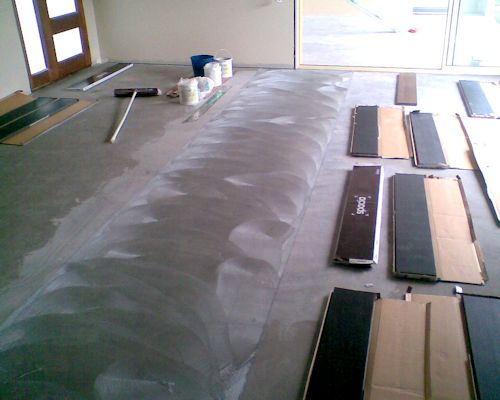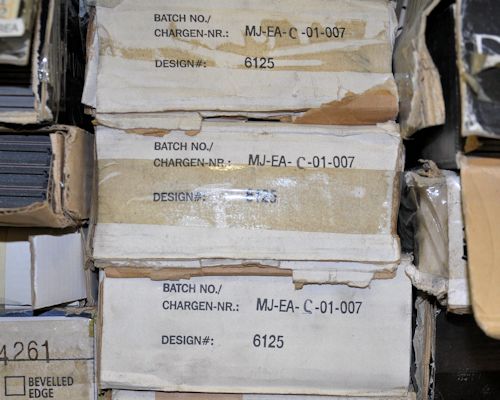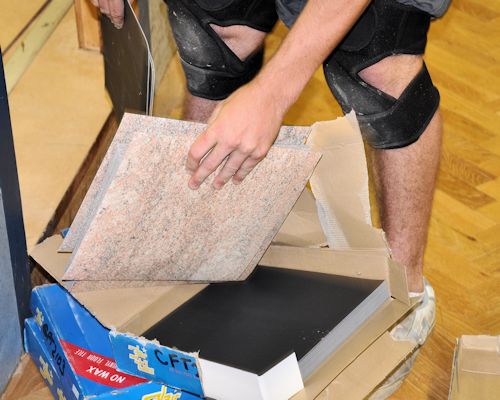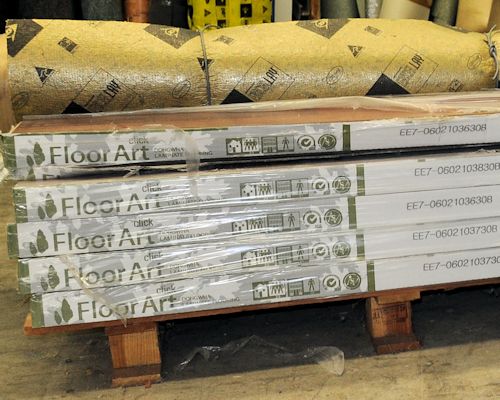Preparing the tiles
 Audio for slide 1 (mp3 |6|KB)
Audio for slide 1 (mp3 |6|KB)
This process is also called acclimatisation.
AS 1884-2012 says that all floor coverings should be conditioned for at least 24 hours, or until the product has achieved an 'ambient room temperature' range of between 15° and 28° C.
For more information on the conditioning process, including the procedures you should follow in buildings with air conditioners or heated floors, go to the lesson: 'Conditioning' in Preparing floor coverings.

 Audio for slide 2 (mp3 |6|KB)
Audio for slide 2 (mp3 |6|KB)
Labels and batch lots
Each box of tiles will have a label on it with details relating to the design, product type and batch number.
The batch number refers to the colour dyes used in that particular manufacturing run - often called the dye lot.
It's best not to mix different batch numbers in the same room, because there may be slight differences in colour from one dye lot to another.

 Audio for slide 3 (mp3 |6|KB)
Audio for slide 3 (mp3 |6|KB)
Depending on the nature of the job, you may be able to 'shuffle' the tiles to mix the dye lots and create a random look, or put particular tiles in a separate area.


Learning activity
Audio 5 (mp3 |6|KB)Manufacturers often specify the recommended temperature range and humidity levels for their products using abbreviations like this:
Temperature: 21° C ± 5°
Relative humidity: 50% ± 10%.
These 'plus or minus tolerances' show the range of measurements allowed by indicating the middle reading and specifying how much higher and lower it is allowed to go.
If the temperature range for a flooring product is listed as 21° C ± 5°, what are the actual upper and lower readings?
If the relative humidity is listed as 50% ± 10%, what are its upper and lower readings?

 Go to Assignment
Go to Assignment